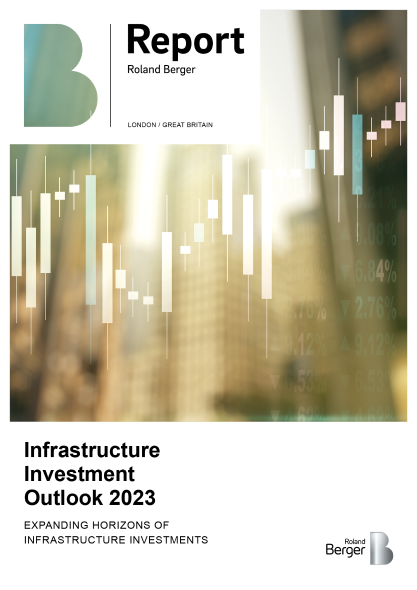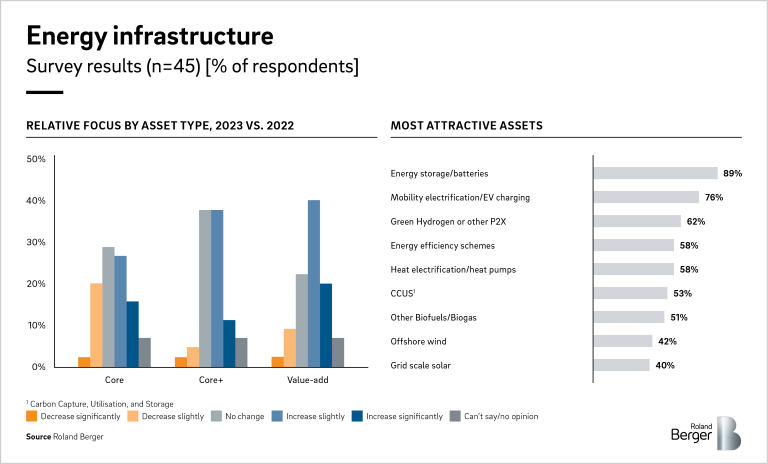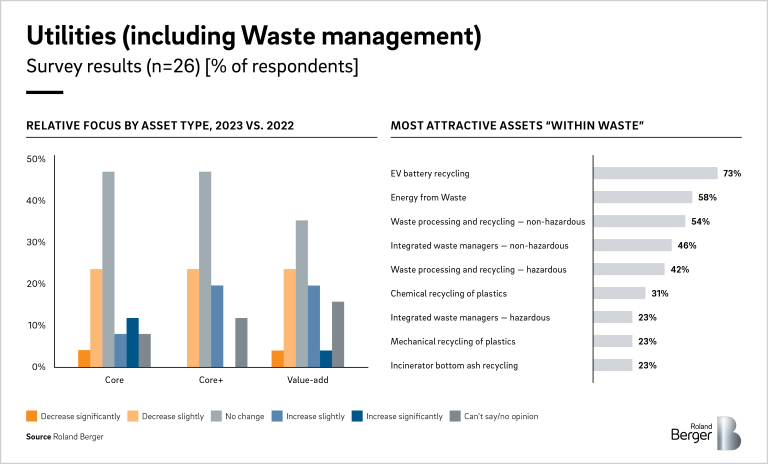Infrastructure Investment Outlook 2023
![{[downloads[language].preview]}](https://www.rolandberger.com/publications/publication_image/Roland_Berger_INS_1016_Infrastructure_Investment_Outlook_2023_DT_download_preview.png)
Expanding Horizons of Infrastructure Investments


By Hrishikesh Potey and Siongkoon Lim
"Investors are navigating two opposing forces: challenges in dealmaking and fundraising, and a continued impetus to invest along decarbonisation, energy transition, and circular economy themes - all the while expanding the frontiers of infrastructure investments. "
Infrastructure investments experienced accelerated growth over the last decade and peaked in 2021 as the pandeminc reinforced the resilience of infrastructure assets. New trends emerge within the infrastructure investment world every year, extending the boundaries of the investment landscape, and we observe two prominent trends:
Firstly, investors are increasingly exploring opportunties based on themes rather than along sector lines. Investment themes such as energy transition, transport decarbonisation, waste, and circular economy have brought new asset types into the infrastructure fold and are driving collaboration across sector teams within the same fund. In 2018 it was challenging to include EV charging assets as infrastructure assets; however, that is no longer the case in 2023. These themes are also influencing the assessment of traditional infrastructure assets - for example, EV charging installations at car parks and forecourts are driving major changes in investment considerations and valuation.
Secondly, hybrid infrastructure investments are broadening the infrastructure universe. These are situations where the target company do not always fulfill the full set of infrastructure criteria and/or where infrastructure funds are purchasing from or competing with private equity funds. Consequently, private equity funds are increasingly looking at their portfolio companies from an "infra-exit" lens and trying to de-risk the cash flows of those where they see this opportunity.
In this report we start at a macro level, dissecting the broader investment and fundraising trends, before moving to sector-level analysis, where we address key frontier topics by sector.
"Electrification assets such as storage, EVs, and heat pumps are very attractive for investors as the investment risks associated with direct subsidy no longer have weight."
Investor sentiment towards Energy infrastructure is a clear winner in our 2023 survey, with focus expected to increase across the board, particularly for Core+ and Value-add portfolios. This is again primarily driven by the need for energy transition.
Leading the way are electrification sectors. Over three-quarters of respondents see EV charging and energy storage assets as attractive, as well as over half also see the electrification of heat through heat pumps as attractive. The success of the UK, Germany, and other European economies in decarbonising electricity through renewable generation means that extending electricity's share of primary energy markets has clear long-term tailwinds. The increasing cost competitiveness of both supply technologies like solar and wind, and demand technologies like EVs and heat pumps accelerate these drivers, as the investment risks associated with direct subsidy no longer have weight - both market forces and environmental demands are increasingly aligned.
"As EV parc grows, EV battery recycling is seen as the most important 'Waste infrastructure asset of tomorrow'"
Waste management has become an important topic within utilities. The share of Waste in overall Utility infrastructure deals has grown from 7% in 2018 to 14% in 2022. Hence why, in this issue, we decided to dive into Waste management rather than covering Utilities at a broader level.
Financial sponsor-led M&A activity in Waste management has grown at a rapid pace. As the risk-return profile of Waste assets has been changing, the direction of wind has decisively been in favour of infrastructure funds vis-a-vis private equity funds.
Assets in the Waste ecosystem display infrastructure characteristics at varying levels. In addition to being regulated and providing essential services to the economy, most Waste asset types exhibit strong barriers to entry and competitive positioning at a catchment area level. The existence of long-term contracts underpinning cash flows varies across the value chain, but customer-supplier relationships are stick and cash flows broadly stable. The industry regulation is based on "polluter pays" principle, therefore, inflation linkage of revenue streams is commonplace across the Waste value chain. And given the ever-increasing importance of a circular economy and regulatory targets, there is potential for growth as well as value creation.

![{[downloads[language].preview]}](https://www.rolandberger.com/publications/publication_image/Roland_Berger_INS_1016_Infrastructure_Investment_Outlook_2023_DT_download_preview.png)
Expanding Horizons of Infrastructure Investments


